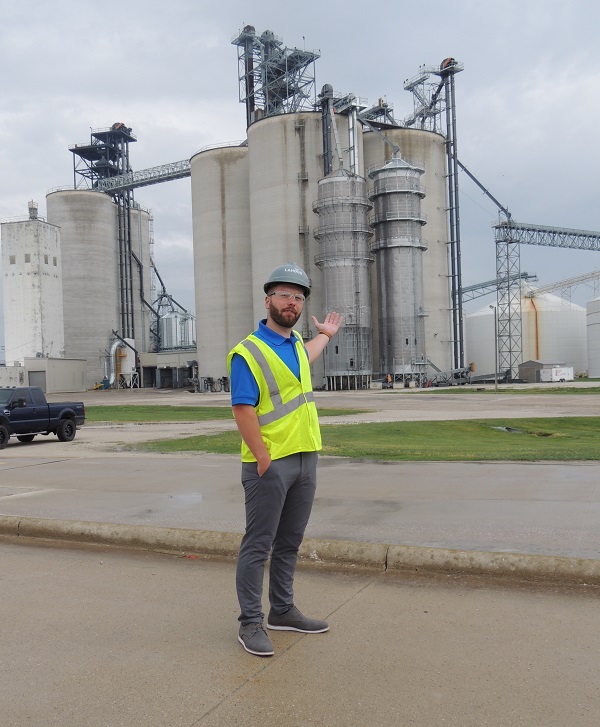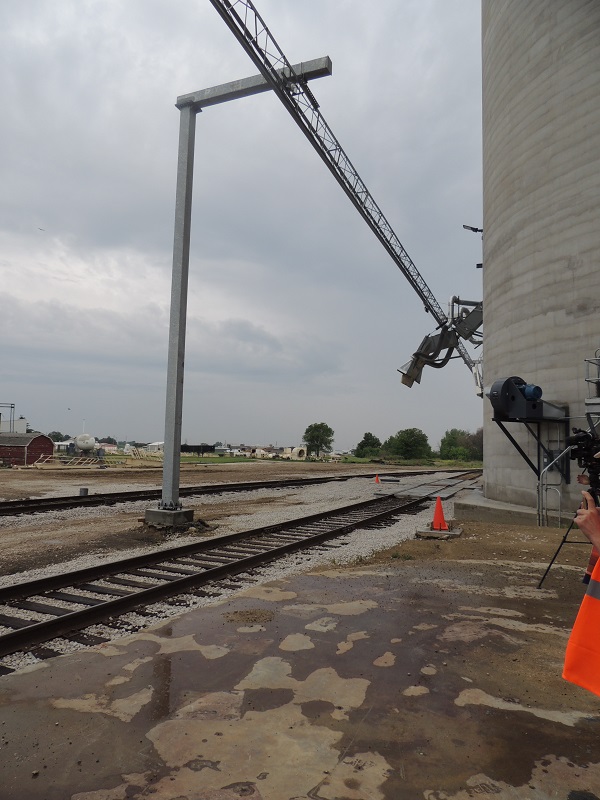Landus cooperative marked the completion of a two-year reconstruction project at its Jefferson location with a news media open house Thursday.

An explosion caused by smoldering grain in a 1950’s concrete silo May 14, 2021, caused considerable damage to the facility. “We were able to take that unfortunate situation and turn this facility into a flagship for Landus,” president and CEO Matt Carstens said.
Carstens noted the life expectancy of concrete silos is about 50 years, and that a high percentage of silos in Iowa are at or beyond that mark. He added that employees rose to the challenges that followed the explosion and that he takes great pride in that.
Landus not only had to ship out 3.9 million bushels of grain that was in storage at the time of the explosion, but also had to prepare for and serve its members during the 2022 harvest while doing a construction project.
Grain was accepted Sept. 17, 2021, for the first time after the explosion. The coop had three grain pits available for delivery, with a capacity of 55,000 bu/hour, for the 2021 and 2022 harvest.
Demolition of the damaged main elevator and one of the three grain pits started after the 2021 harvest was completed in late November. Demo was finished in January 2022.
Carstens explained that because exports are an important part of the commodities market, rail transportation is critical. After the explosion the coop was unable to load train cars, requiring all grain from the Jefferson facility to be trucked out.
A new loadout bin was ready to load trucks in April, 2022, and construction began on the new concrete elevator. Over the summer, 6.4 million bushels were shipped via truck to empty the storage silos for the 2022 harvest.
The elevator construction and renovation was completed in April 2023. The first train load of grain was shipped from Landus Jefferson on April 26.
According to Landus corporate information, the modernization of the concrete elevator design greatly reduces the risk of an occurrence similar to the 2021 explosion happening again.

All lost receiving capacity has been replaced with two new 20,000 bushels/hour receiving pits with full drive-over dumps. Total receiving capacity is now 80,000 bph with four pits.


The facility can now load a full unit train at a rate of 80,000 bph, which is 30,000 bph faster than the old system. Approximately 440,000 bushes, or 110 railcars, can be loaded in six hours using one computer and a single remote control. Business unit leader Tyler Shultes, who led the media tour, said the remote loading system resembles a video game.
A new dryer location was added, increasing drying capacity by 6,000 bushels/hour, and expanding the true wet holding capacity from 80,000 to 800,000 bushels. Carstens said they’re already anticipating a wet harvest this fall, making the added capacity even more important.
Landus Jefferson has a total corn and bean storage capacity of 7.3 million bushels.
Media was also briefed on Landus’s next project – a seed treatment center at the beef feed center, originally MicroSoy. The $1.1 million investment will lead to a facility for state-of-the-art custom seed treatment, with additional space for storing the necessary treatment products.
The seed treatment center will be completed before the 2024 planting season.

